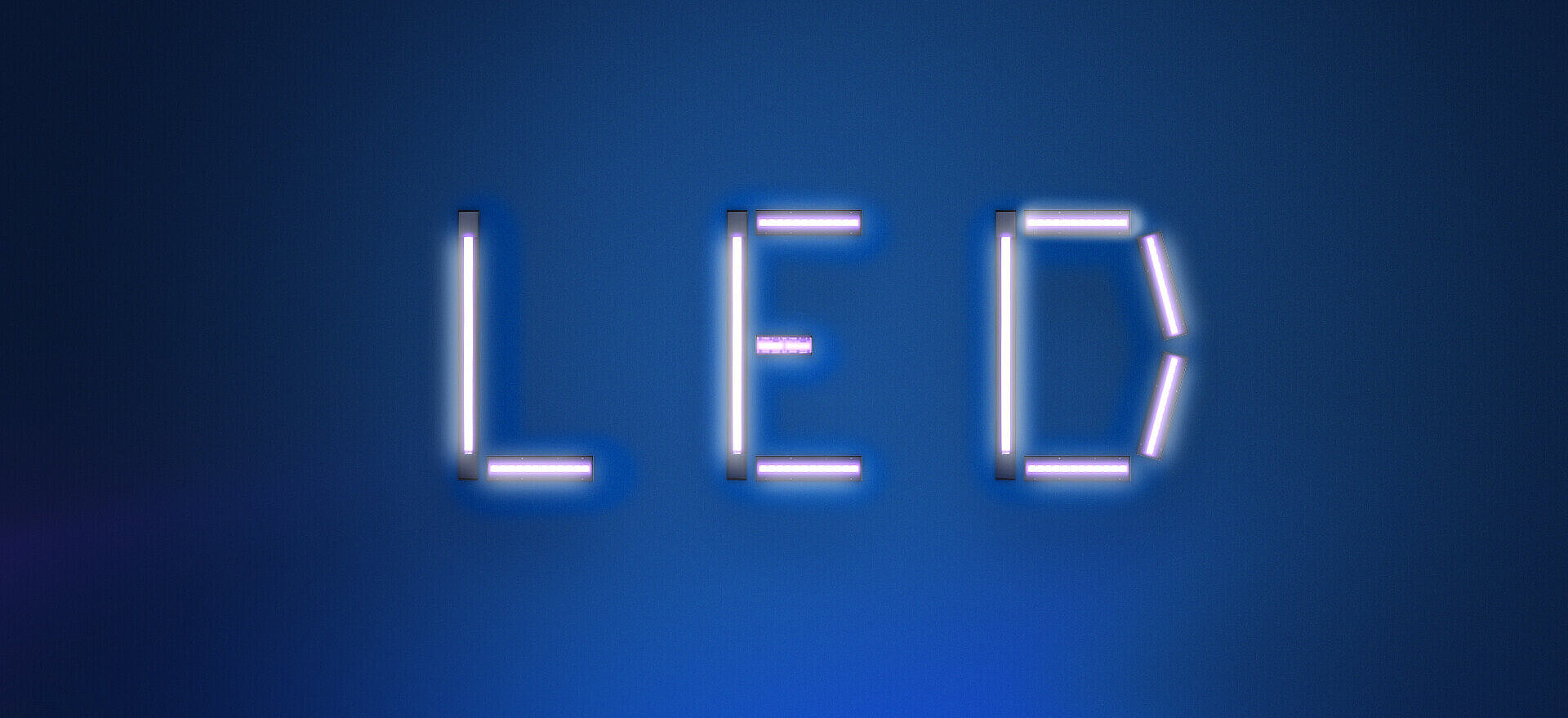
Basics LED UV Technology
LED UV basics
In physics terms, light is a form of electromagnetic radiation. Light visible to the human eye is in the wavelength range between 380 and 780 nm. The UV (ultraviolet) and IR (infrared) ranges are just outside either end of this range. Systems which cure by means of radiation accordingly use UV light (wavelengths between 100 and 380 nm) to cure inks, varnishes, silicones, seals and adhesives, for example. Besides UV arc lamps, LED systems have seen increasing use in industrial curing since the turn of the millennium. When LEDs (LED is an abbreviation of the English “light-emitting diode”) are used in industrial applications, they are combined in small construction units to suit the output required.

Industrial LED technology used for cross-linking work at wavelengths between 365 nm and 405 nm, with the range between 385 and 395 nm is being used the most frequently. The modules can take 100 or more LEDs. An intelligent circuit controls these modules, also allowing them to be switched in zones. Zone circuits allow adaptation to working width, resulting in energy-saving potential. The compact output packages obviously generate waste heat. As a rule of thumb, the following applies: the greater the efficiency of the individual LED, the less waste heat is produced. For a long service life, the waste heat which arises needs to be routed away. If this is effected with a high level of efficiency, then a long service life is associated with high emissions. The task of development is to get the radiation emitted by the LED to the substrate without loss if at all possible. Optical decoupling is of key significance for this. The subjects of thermal and optical decoupling have been successfully implemented by XT8 technology, and a saving of 30 % is associated with this.
For industrial applications, LEDs (short for light-emitting diodes) are arranged in several smaller units, depending on the required output. The resulting modules can contain 100 or more LEDs. These LEDs are controlled via an intelligent circuit, meaning they can also be controlled in zones. This zoned control makes it possible to adapt the LEDs to the working width and offers energy-saving potential.
It goes without saying that these compact units generate waste heat. As a general rule: The higher the efficiency of the individual LEDs, the less waste heat is generated. To extend the service life of the LEDs, this waste heat must be dissipated. If this is done with high efficiency, then the extended service life also yields high output.
The development challenge is to ensure that the LED light emitted reaches the substrate with as little loss as possible. When doing so, optical decoupling is of critical importance.
The issues of thermal and optical decoupling have been successfully implemented using XT8 technology. This results in a saving of 30%.
LED systems for curing inks or adhesives can be cascaded as a function of module width, and thus varied in length. The power supply cables present a challenge to cascading. If modules are now lined up with one another, parallel switching of these power supplies would be required. To get round this issue, this requirement was taken into account back at the layout design stage and solved by means of an internal power supply system.
LED technology is used in industrial drying and curing wherever its specific advantages are required. Advantages of light-emitting diodes, such as
are also valued in private, everyday use. They are a significant reason for the success of LEDs, e.g. in homes or in the automotive industry. Another common example of the use of LED technology is the polymerisation (curing) of plastics in dental Technology.
LED UV systems are used both in the printing industry and in numerous other industries on various substrates where coatings and adhesives play a role, such as
In principle, there is a variety of potential applications for LED curing technology in the industrial drying of inks, varnishes, silicones, seals or adhesives on different substrates. Retrofitting is also a possibility. If you are pursuing new approaches, talk to us! We will be pleased to help and promise to maintain confidentiality.
W/cm² has become the established unit of measurement in LED systems. This value indicates the maximum intensity per unit of area. However, since the intensity decreases with increasing distance, the value directly below the exit window is often cited. For comparable measurements, the location at which the power was measured is decisive. Values can vary depending on whether measurements are taken at the chip surface, at the exit window of the emission or at the substrate level. The spatial and temporal distribution in the measuring field must also be taken into account.
Furthermore, it is important to ensure that a suitable UV measuring system is used. This is characterised by a high and as uniform a sensitivity as possible in the wavelength range emitted by the LED. Please contact us for more information.